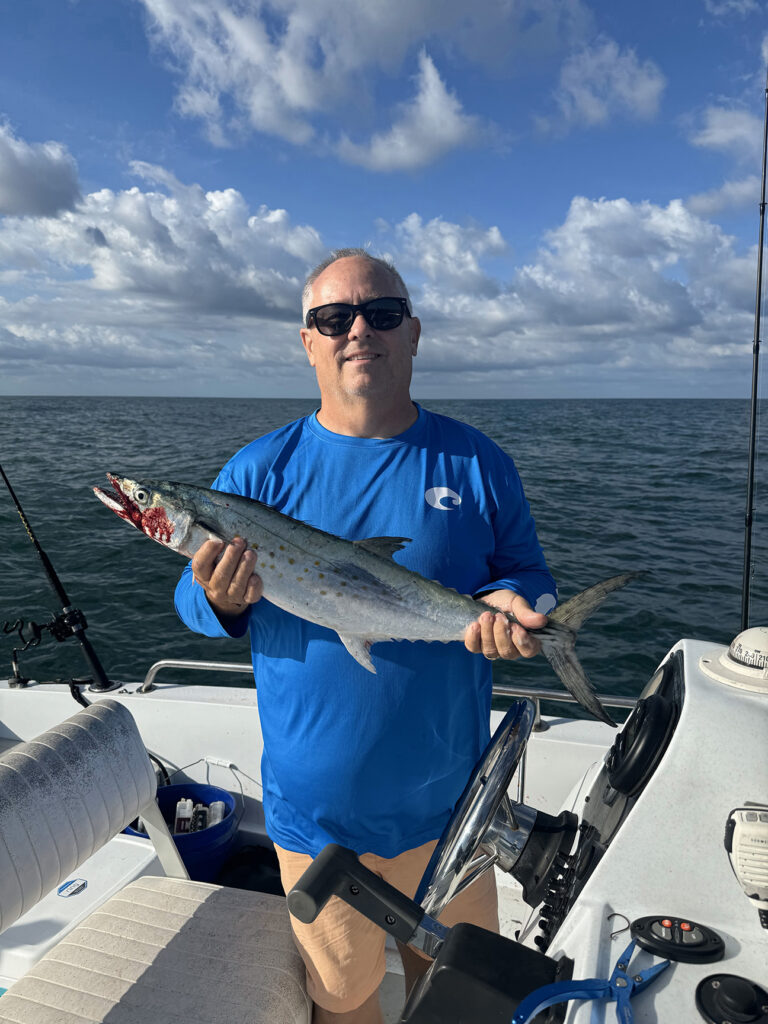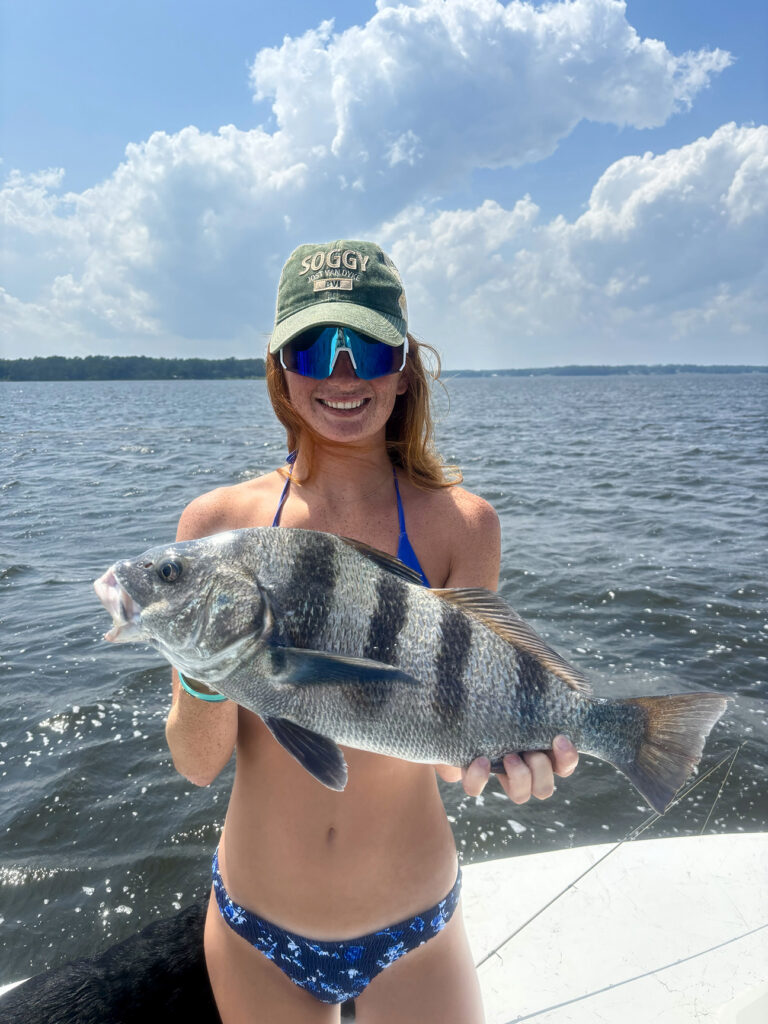Swansboro/Emerald Isle – August 2024
Morgan, of The Reel Outdoors, reports that surf anglers have been catching sea mullet, pompano, bluefish, and some spanish mackerel.
Inside, the red drum action has been picking up, with scattered black drum also in the mix.
Getting offshore has produced king mackerel, mahi, and the occasional wahoo.
Rob, of Sandbar Safari Charters, reports that red drum action has been good in the area. Anglers are finding redfish scattered on shallower mud flats on higher tide cycles, and then having success fishing around ICW edges on lower tides. Plenty of finger mullet, menhaden, and shrimp are around, so anglers are mostly using live bait for the redfish.
Black drum are staged up around the bridges and are eating shrimp and mud crabs.
Some sheepshead are in the same areas, and they mostly prefer fiddler crabs.
Groups of spanish mackerel are chasing schools of mullet in the ICW. Casting glass minnow-style jigs to them will entice strikes.
A lot of 4-6’ sharks are in the deeper (6-10’) channels inshore, especially areas where menhaden in present.
Matt, of Friendly City Fishing Charters, reports that the area is loaded with good-sized bait right now, including mullet, menhaden, and shrimp. Consequently, the red drum are everywhere, including scattered along the ICW, back in the marshes, and up into the rivers.
Some speckled trout are around. The best action will likely be up in the White Oak River, and target some of the deeper oyster rocks during a falling tide. Artificials usually have the best success, with Zoom jerk shads in golden brim color patterns on 1/8 oz. jig heads being a top choice.
Bottom fishing should produce plenty of black drum when targeting local docks.
Spanish mackerel and bluefish are hanging around the inlets, with both species also off the beach.
Fishing bait around the inlet is producing a bunch of bonnethead sharks

Greg Epperson, of Swansboro, hooked this spanish mackerel offshore of Emerald Isle using a silver Clarkspoon.
Jacob, of Southern Tides Fishing Charters, reports that there are a lot of red drum moving around in the ICW and up the White Oak. On higher tides, also look in some of the marsh bays closer to the inlets where there is cleaner and slightly cooler water.
Speckled trout (most 16-20”) are being found closer to the inlet. The numbers aren’t great, but some quality fish (to 4+ lbs.) are around. Target areas with 5-6’ depths using live shrimp, and if the bait stealer species are too bad, switch over to a Carolina-rigged mullet to stay on the bite.
Black drum are staged up around bridges, oyster rocks, and deeper channels closer to the inlet. Fiddler crabs or live shrimp work best for them.
Flounder are all over the place.
Spanish mackerel are just off the beach in fairly good numbers for those anglers looking to do some trolling.
Lee, of Top Gun Fishing, reports that bottom fishing in the area has remained really good. A bunch of nice-sized triggerfish are being caught.
Amberjacks have moved in, and they’ll strike just about anything alive (such as menhaden and pinfish).
Keep an eye out when fishing over the deeper bottom areas, as king mackerel have moved in and there is always the opportunity for the occasional summertime mahi.
Inshore, black drum and red drum are feeding around bridges, pilings, and docks, especially during the outgoing tide.
Gray trout are staged up around bridges, especially in deeper water holes. Fishing live finger mullet has been key for the gray trout bite.
Red drum are scattered throughout the ICW and back into the marshes. Similar to other inshore efforts right now, live bait is key with the hot water temperatures.

Tiffany Harris, of Stella, NC, landed this 22″ black drum behind Emerald Isle using live shrimp. She was fishing with Capt. Jacob Boucher of Southern Tides Fishing Charters.
John, of Early Riser Fishing Charters, reports that the nearshore bite has been reasonably productive, with anglers seeing catches of king mackerel, cobia, and mahi. Most of this action is going on in the 10-12+ mile range over the low profile structures. As conditions keep getting hotter, anglers will do best by pushing out a little deeper and dragging some dead baits mixed in with the live baits. On some days, live will out fish dead, and on other days, dead will outfish live. It also helps to utilize a downrigger through these hotter months, as the fish will be down deeper trying to find slightly cooler water.
Barracuda, amberjacks, and sharks will be staged up all over the bigger ledges, wrecks, and artificial reefs. They all put up a great fight and are usually willing to chew.
Don’t count out sailfish as another option, as August is when they start to push closer to shore.
Mike, of Bogue Inlet Pier, reports that recent bottom fishing efforts are producing croakers, pompano, bluefish, sea mullet, and speckled trout.
When the conditions are settled and the water clear, some spanish mackerel will move within casting range of anglers throwing plugs.
